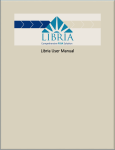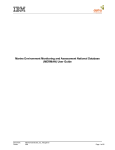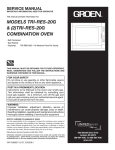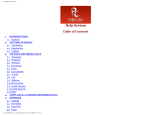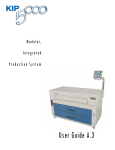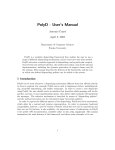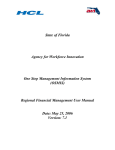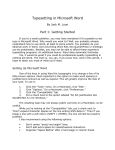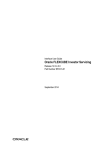Download Libria Administration Manual
Transcript
Libria Administrator Manual
Libria Administrator Manual
Table of Contents
Introduction...................................................................................................................................................... 4
Public User ..................................................................................................................................................... 5
Organization User........................................................................................................................................... 5
Organization Administration .......................................................................................................................... 6
Admin Home .............................................................................................................................................. 6
Search for a request (public) .................................................................................................................. 6
Add public * Request.............................................................................................................................. 8
Holiday Schedule .................................................................................................................................... 8
Add: .................................................................................................................................................... 8
Edit ..................................................................................................................................................... 8
Delete: ................................................................................................................................................ 8
View Audit History.................................................................................................................................. 8
Request Types ........................................................................................................................................ 9
Add a new Request Type .................................................................................................................. 10
Create new: .................................................................................................................................. 10
Copy and Paste: ............................................................................................................................ 10
Request Fields .................................................................................................................................. 11
Add Button: Create New Field...................................................................................................... 15
Actions Column ............................................................................................................................ 17
Request Steps ................................................................................................................................... 18
Adding Steps ................................................................................................................................. 18
Step roles...................................................................................................................................... 19
Letter & Email Templates ................................................................................................................. 29
Settings ................................................................................................................................................. 33
Add a Setting .................................................................................................................................... 34
Edit a Setting .................................................................................................................................... 35
Masks ................................................................................................................................................... 35
Add a Mask ....................................................................................................................................... 35
Edit a Mask ....................................................................................................................................... 36
Roles and Users .................................................................................................................................... 36
System Roles .................................................................................................................................... 36
2
Table of Contents
Admin: .......................................................................................................................................... 36
OrgAdmin: .................................................................................................................................... 36
OrgStaff: ....................................................................................................................................... 36
Creating a Role ................................................................................................................................. 37
Add Users to the new role: .............................................................................................................. 37
Creating A New User / Add User to a Role ....................................................................................... 37
Creating an Organization...................................................................................................................... 37
Installation Requirements and Quick Setup............................................................................................. 39
Minimum Requirements ...................................................................................................................... 39
Server ............................................................................................................................................... 39
Scanning Clients ............................................................................................................................... 40
Web Browsers .................................................................................................................................. 40
Install Libria .......................................................................................................................................... 40
Helpful Tips............................................................................................................................................... 45
Libria Administrator Manual
Introduction
MSF&W has set out to create a web-based management system that would allow agencies to
electronically manage FOIA documents. The application also will allow members of the public to track
FOIA requests via agency websites.
Libria will help streamline the requests, so employees are not standing at photocopiers for hours and
hours. They can do electronic lookups and electronic documents, so they’re not stuck in the file
room, even if they are a paper-heavy environment.
Libria Features
Secure Redaction: By burning redactions onto the image, your information is safe
Granular security controls to manage user permissions and access
Document import & scanning: Combine electronic files and paper documents into one response
packet
Audit Log: easily view an audit trail of all user actions
Customizable workflow: Model workflows steps specific to your organization through an easyto-use interface
4
Public User
Dashboard view: easily view request status, outstanding volume, and approaching due dates
Reporting: run standard or ad-hoc reports to show FOIA requests by status, date range, user,
etc.
Web requests: submitted requests are automatically captured and routed to workflow for
processing
Online Tracking: Tracking number automatically assigned for status checking by requester
Online Publishing: Publish responses online to be downloaded by requester
Search and retrieve: Easily gather relevant documents from emails, documents repositories, or
network directories
Hosted or installed: Online, "cloud" based solution or installed on your server
Correspondence Manager: Customizable templates make sending response letters simple
Custom integration: Optional integration with your document management system
Alerts: Automated deadline creation, tracking, and alerts
Accessible: Complies with accessibility standards for people with disabilities including Section
508, WCAG 2, and IITAA
For more information or a demo, call 877-698-3535
MSF&W
Public User
For information on Public User’s adding new requests and searching on submitted request, see Libria
User Manual.
Organization User
For information on Organization Users logging in, resetting passwords and fulfilling a request, see Libria
User Manual.
Libria Administrator Manual
Organization Administration
When Libria is installed on the server, it will include a default organization. This default Organization
may be modified to meet the business needs of your organization. Users whose login id belongs to
the OrgAdmin role, will be able to make the necessary modifications.
Admin Home
OrgAmin users can access administration screens by using the Admin link on the menu bar. From this
window a user can add or modify Request Types, Settings, Masks, Roles, Users, run Reports, add or
retrieve Requests and make changes to the Organization Info.
Search for a request (public)
In order for a public user to find out the status of their request, they can enter the Tracking Number and
the Requester's email or a keyword of the requested information.
Tracking Number - The number assigned to the request. This number was displayed on the confirmation
window when the request was submitted and may also have been sent in a confirmation email.
Entering only the Tracking Number will return a single result.
Requester's Email - Enter requester's email as it was entered in the Email field when the request was
created.
Keywords - Text entered in the Keywords searches text that was entered in the Information Requested
field when the request was submitted.
6
Organization Administration
Enter text in the Keywords OR the Tracking Number AND the Requester's Email.
Entering a Keyword search limits the amount of information returned.
Searching on the Tracking Number and the Requester’s Email will return the final document, if
request is completed, and any correspondence in the Document Downloads box and also any
attachments that had been submitted with the request.
Click on the Search button.
For each request found, the request's information and status will return.
The Status will be In progress or Complete.
The Information Requested text appears when the mouse hovers above the Tracking # for each
request.
The list may be narrowed by entering additional text in the Filter box. This may be the Tracking
#, Requester, Affiliation, Status or Information Requested columns. The Information Requested
column is a hidden column but can be viewed by using the mouse to hover over the Tracking #.
Click on the Tracking # to open the request. If the documents were published to the public site,
they will be listed in Document Downloads for the requester to retrieve.
If the request is not found, verify that the Tracking Number and Requester's Name was entered
exactly as it was given on the confirmation window or in the confirmation email.
Libria Administrator Manual
Add public * Request
See Adding Public Request for details in the Libria User Manual.
Holiday Schedule
Holiday Dates are taken into account when the number of days are calculated for a Request's Due Date.
Add:
To add a Holiday, click on the Holiday Schedule link located to the left of the Home window.
1.
2.
3.
4.
Click on the Add button.
Enter the holiday in the Name field.
Select the holiday's date in the Holiday Date field.
Click on the Save button.
Edit:
To edit a Holiday, click on the Holiday Schedule link located to the left of the Home window.
1. Click on the Edit
icon of the holiday's name.
2. Make the changes.
3. Click on the Save button.
Delete:
To delete a Holiday, click on the Holiday Schedule link located to the left of the Home window.
1. Click on the Delete
icon of the holiday's name.
2. A verification window will open.
3. Click on the Delete button.
View Audit History
A user logging in as an administrator can view audit history records of a single request.
1. Entering in the Tracking #.
2. Click the Search button.
The Audit Search Results displays audit information for when a request has been created, completed,
deleted, Due Date change, step completion, adding documents, deleting documents or letters,
adding letters, sending emails and changing or adding field data. Some of the audit records are
shown in the image below.
8
Organization Administration
3.
4.
5.
6.
Click on the View link in the Action column.
A list of fields and their data values are displayed.
The Update Date column will show when the value on the field was last set.
Click Back to List to return to the Audit Search window.
Request Types
Below is a diagram displaying the parts needed to create a new Request Type. If any changes need to be
made to a Request Type already in place, this chart should also help in locating where the
modification needs to be made. When Libria is installed on the server, it will have a default Request
Type already configured. The default Request Type may be modified to meet the needs of your
organization.
Libria Administrator Manual
Add a new Request Type
Create new:
1.
2.
3.
4.
Click on Request Type located on the menu bar.
Click on the Add button.
Title: Enter the name of the new request type in the Title.
Description: Add a description if needed. The description is shown on the Request List
administration page.
5. From Email: Enter the reply email account. When a requester receives an email such as a
confirmation, the requester can send a reply email to this account.
6. Email Confirmation Template: Select the Email Confirmation Template that will be sent out on a
Public Request upon the submission of a request.
7. To upload the organization's logo, click on Browse button.
8. A Choose File to Upload dialog will open.
9. Locate the file and click the Open button.
10. Click on the Save button.
Note:
In order to run reports specific to FOIA reporting, “FOIA” needs to be included in the request type
name.
The newly added request type will have a Status of Draft until it has been set to “Go Live”.
Copy and Paste:
Copy and Paste can only be used to copy an existing request type and paste it as a new request type,
assigning it its own name, within an organization.
10
Organization Administration
1.
2.
3.
4.
5.
Click on Copy and Paste button.
Select a request from the Templates drop down.
Enter text in the New Request Name field.
Click on the Save button.
Modifications may need to be made to users, roles, steps and activities.
a. Reset Step Role filters such as when assigning Departments to a request.
b. SetField type activities need to have the Field Name set.
Request Fields
There are fields that have been built into the system but your organization may need to add additional
fields to collect data on a Request type. These fields can be configured for use on the intake screen
and/or on steps during the fulfillment process. Fields need to be created for the request type before
they are available to be added on a Step Role.
Libria Administrator Manual
BUILT-IN FIELDS USED ON INTAKE SCREEN
LABEL
DESCRIPTION
NAME
RequesterName
Requester Name*
Affiliation
Affiliation
RequesterAddress
Address
RequesterCity
City
RequesterState
State
RequesterZip
Zip Code
RequesterPhone
Phone
RequesterEmail
Email*
Required field: Users are required to fill in data before
the request can be submitted. This field would
include both first and last name.
If the request is being submitted on the public site, this
field is required so that the confirmation email may
be sent. It is not required when the request is
submitted on the internal website.
RequestInformation Information Requested*
Required Text Area field: Users are required to fill in
data before the request can be submitted.
RequestDate
(hidden field-uses create date)
ResponseType
Preferred Response Method*
Combo values: Download from website, Email, Fax, CD,
Paper Documents
SubmissionType
Submission Source
Combo values: Unknown, Online, Email, Fax, Phone,
Mail
12
Organization Administration
RESERVED / OPTIONAL FIELD NAMES
LABEL
DESCRIPTION
NAME
Department
User defined
The Department field is a reserved field and was built
into the application to aid in assigning requests to
different roles. It is created when a new request type
is added as a checklist box field type. Field Values
will need to be added if your organization will be
using the “Department” field. You may change the
Label value but not Name value due to the
applications filtering and reporting needs. The Label
value is what end users will see. Assigning requests
by the “Department” field allows users to filter the
Request List by their department.
Exemptions
User defined
Exemptions is a reserved field within Libria. The
Exemptions field should be added as a checkbox list
field type. The Name needs to be “Exemptions” since
it is used to create the FOIA specific Quarterly
Exemptions Report. The label can be named
whatever your organization wants their end users to
see. A list of field values also will need to be added.
The checkbox field type allows users to select
multiple values.
Approval
User defined
The Approval field is a reserved field that is used to
create the FOIA specific Monthly Request Log report.
If your organization is creating a FOIA request type,
this field needs to be added as a combo box field
type along with adding field values. In our example
FOIA request we included Approved and Denied as
field values and use it to approve or deny the FOIA
request.
Final Status
User defined
The Final Status field is a reserved field that is used to
create the FOIA specific Monthly Volume Report. It
needs to be added as a combo box field type to the
request along with adding field values. In our
example FOIA request we included Fulfilled, Partial
Denial and Full Denial as field values.
Libria Administrator Manual
Field List View
Add button: used to create new fields for a request.
Reorder: Clicking on the arrow will move the line item up one.
Default Access: displays what type of access users have on the field by default.
Name: the field label.
Type: displays the field type.
Updated By: user who last saved the field type.
Actions:
o
o
Edit:
icon that when clicked on opens the edit window for the field type.
Properties:
icon that when clicked opens the properties window for the field type.
o
Delete:
icon that when clicked on will delete the field type. A dialog will open to
verify that you do want to delete the field type.
Search: Entering text will filter the list of fields as you type.
14
Organization Administration
Add Button: Create New Field
1. From the Edit Request window, select Fields from the menu on the left.
2. Click on the Add button.
3. Name: Enter a name with no spaces for the new field. The Name value is used internally and is not
seen by the end user.
4. Description: A description of the field type may be added for help reference. The Description is not
visible to the end user. Text entered in Description will be used as hover text when a user is filling
out the request form.
5. Label: Enter a label for the field type. The value entered here is seen by users and may contain
spaces.
6. Type: Select a type this field needs to be.
Combo: use when a single selection from a list of Field Values is needed. See Field Values section
below to add the combo box values.
Check Box: will place a check box preceding the Field Type Label.
Checked Listbox: use when one or more selections from a list of Field Values are needed. See
Field Values section below to add the checked listbox values.
Date: allows the data to be entered and stored as a date value.
Text Box: displays an sinlge line input box.
Libria Administrator Manual
Text Area: displays a multi-line input box.
Integer:
Number:
7. Default Access: Select an option from the drop down list.
None: by default, users won't have access to the field. When the user needs access and the
default is set to None, set the Field on the Step Role Field to have FieldAccess with View or
Update Access.
View: users will only be able to view but not update.
Update: users will be able to update.
8. Default Value: Optional. Select from a value from a combo box or enter text to set the default.
9. Mask: If no mask is needed, skip. Masks are created at the Organization level so that they are
available to all Request Types. For further information, see the Masks section.
10. Active: Place a check mark in the box.
11. Public: If the field is to be visible on a Public Request intake, place a check mark in the box.
12. Required: If data is required, place a check mark in the box.
13. Click on the Save button.
Add: Combo and Checked Listbox Field Values
Once the Combo and Checked Listbox Field Type is created, you will want to add Field Values.
1.
2.
3.
4.
5.
Click on the Field Values button shown on either the Field Details or Edit Field window.
Click on the Create button and the Create Field Value window opens.
Fill in the name of the Caption and click on the Save button.
Repeat for each Field Value needed.
The number entered in Value is incremented by 1 for each Field Value added.
16
Organization Administration
Actions Column
Field Properties Window
The Field Properties window displays the property values for the field.
To make edits to these values:
1. Click on the Edit button.
2. Make the changes.
3. Click the Save button.
Fields Edit Window
1. Click on the Edit
icon.
2. Make changes as needed.
3. Click on the Save button.
Note: It is not good practice to change the data type the field is after the system has gone live. e.g. from
Combo type to Text Box.
Libria Administrator Manual
Request Steps
Steps will need to be added in order for the request to go through the fulfillment process. The number
of steps needed is up to your organization. In the example organization that is used in this manual,
there are six steps.
Each step has a set number of activities that need to be performed in order to complete the step. Some
activities may be required while others are not. Users are to place a check mark in front of the
activity when they have completed it. An activity that is required to complete has an * asterisk next
to it. When all the required activities have been completed, the Complete Step button appears for
the user to send the request into the next step of the fulfillment process.
Adding Steps
Create the steps that will help in fulfilling the request. From the Edit Request window:
1.
2.
3.
4.
5.
6.
Click on Steps menu option.
Click on Add button.
Enter a name for the step in the Name field
Enter a description, if needed, to describe the step or give instructions.
Click on the Save button.
To complete the configuration of a step, here is a checklist to follow. The instructions for each are
given below.
Click on the step to open the Edit Step window.
Add Step Role. See Step Roles below.
Edit Step Role
Add Fields. See Step Role Fields below.
Add Activities. See Step Role Activities below.
18
Organization Administration
Step List Grid
The Step List window displays the list of Steps that have already been added for the request.
Reorder: When you click on the arrow for a step, the step will move up one in the list.
Name: Name of the step.
Description: Description of the step.
Update Date: Displays the last date the step was saved.
Updated By: Displays the user who last updated the request.
Actions:
o
o
Edit: clicking on the Edit icon
will open the Edit Step window. From Edit Step
window you can click on Add Role button.
Properties: clicking on the Properties icon
will open the Step Details window. From
the Step Details window you can click on the Edit icon or Add Role button.
o
Delete: clicking on the Delete icon
will open the Delete Step window. From the
Delete Step window you can click on the Delete button to confirm that you do want to
delete the step.
Search – The Search box allows the user to filter the Step List making it easier to locate an item.
o Type the text being searched in the input box.
o As the user types, the Step List displays only items with the text typed.
Step Roles
Step Details Window
Displays the Roles already on the Step. Each role will have their own set of activities. Role access can be
dependent on a field value.
Role Name: displays the Step Role's name.
Access: shows the default access the role has on the step.
Update Date: last date the item was updated.
Updated By: the name of the person who updated the item last.
Actions:
o
o
Edit:
icon that when clicked on opens the edit window for the Step Role.
Properties:
icon that when clicked opens the properties window for the Step Role.
o
Delete:
icon that when clicked on will delete the Step Role. A dialog will open to
verify that you do want to delete the Role.
Libria Administrator Manual
Organizational roles are used to add a Step Role. Multiple roles may be added so that the step can be
completed by one or more of the roles listed on the step as long as there are activities for the role to
complete. A step needs at least one role in order for the activities to be defined.
20
Organization Administration
Adding Step Roles
1. Click on the Step name in the Step List window to open the Edit Step window which will allow the
admin user to add Step Roles.
2. Click on Add Role button.
3. The Add Step Role window opens.
4. Select a role from the drop down. See Roles / Users / Passwords to see how to add the Organization
Roles.
5. Select the Access type of View, Update or None the role should have by default. When only a single
role is added to the step, Access should = Update.
Libria Administrator Manual
None – by default won’t have access to the step. When set to “None”, access is given to the step
by adding a Step Role Field combo box field with the Type setting = Filter and setting the Step
Filter Value.
Update - allows access to the step by default.
View - allows access to the step by default.
6. If the role is to receive email that will notify them when a request enters the step, enter the email
address. Only one email account may be entered. If the notification is to be sent to multiple people,
it is suggested to use an email distribution email address.
7. Place a check mark in the Active box.
8. Click the Save button.
Add the number of roles that are needed to complete their own set of activities.
Step Role Fields
Request Fields are used to add Step Role Field entries. Fields added to the Step Role Fields can be
configured to control role access to the step and or the ability to edit the field being defined.
Adding Step Role Fields
Create the step role field that will help in fulfilling the request.
1. From the Edit Request window
2. Click on Steps link
22
Organization Administration
3.
4.
5.
6.
7.
Click on the Step you will be adding Role Fields to
Click on the Role Name
Click Fields link
Click on +Add
Field Name: Select a field from the drop down list. The fields in the drop down list are populated
with the values created with the request type fields.
8. Type: Select the Type from the drop down list
FieldActivity: allows the field to be available for a SetField activity. E.g. set a value on a combo
box.
FieldAccess: allows the value to be changed on the Request Field’s Default Access.
Filter: May be used to filter if the request will skip the step depending on the value of a combo
box field or when using the built in field Department to control if a role will have access to the
step. The filter is on the value set in the Step Filter Value property.
FieldActivity: Will pop-up a dialog to allow the user to change or enter the value of the field
selected in Field Name when the Access is Update.
Libria Administrator Manual
9. Access: Select one of the three options
None - the role has won't have View or Update rights.
View - gives the role view rights on the field.
Update - gives the role update rights on the field.
10. Required: only used on FieldActivity; field validation is performed when the Complete Step is
submitted.
11. Step Filter Value: Used when Type is Filter. The field selected in Name should be a combobox or a
checkbox list field type so that the field values are shown in Step Filter Value drop down list.
12. Click on the Save button.
In some instances there may need to be two entries for that same Request Type field. One to give the
role access, FieldAccess, and the other to allow for FieldActivity or when using the Filter.
Validating field values in order to complete the step
To have the “Complete step” validate a field activity you need the step role field properties set as
follows:
Type = FieldActivity
Access = Update
Required = checked
24
Organization Administration
Note: Marking the required on a step role field with a FieldAccess type will not validate a field value.
Step Validation seen by fulfillment user:
This image shows an example of using a Step Role Field type of Filter.
Step Role Activities
At a glance, the Step Role Activity List gives you information on Name, Description, Type, Required,
Update Date and Updated By.
Libria Administrator Manual
Create the Step Role Activity.
1.
2.
3.
4.
5.
6.
7.
8.
From the Edit Request window
Click on Steps link
Click on the Step you will be adding Role Activities to
Click on the Role Name
Click Activities link
Click on +Add
Name: enter a name for the activity
Description: enter a description of the activity if needed
9. Type: select what type the activity is
10. If the type is:
Capture - activity opens the capture window, a click-once application, so users can scan
hardcopy documents. Electronic files may also be uploaded or drag and dropped in the scan
window.
Checkoff - can be used for activities that are performed outside of Libria application.
CreatePDF - calls the action to generate the final PDF document that is to be sent to the
requester.
26
Organization Administration
Edit - activity opens the document list window. Documents that have been uploaded or
scanned may have markups applied when in edit.
Email -the Email activity type opens a dialog that allows the staff user to select which files are to
be sent to the requester. The available files are the final CreatedPDF and letters that have been
created using the predefined templates.
ExtendDueDate - opens a dialog popup that allows the request to be extended. The number of
days that are populated in the drop down come from the Edit Request window's Compliance
Day Deadlines.
Info - is for display information only. Info type activities cannot be required.
Letter - selecting Letter will enable both the Letter and Email Template drop downs. Select one
of the letter templates from Letter. If the letter is to be sent in an email, select an email
template. The activity will open a template file so the user may modify, in marked areas, if
needed. There is a Create button that creates a PDF file. The PDF file cannot be edited.
Link - when Link is selected, a Location field is made available to enter HTML to an external link.
Publish - opens a window of the document list showing the final PDF and template letter PDF's
that were created. The user can select which documents that are to be published to the
website's Public page so the requester can download them.
SetField - is used to associate a field that was added to the Step Role Field list. When SetField is
selected, the Field Name is made available so that you can select from the drop down. The
activity will open a dialog popup so the user can add or select a field value.
Upload - activity opens the Upload window so the user can locate and upload electronic files.
Some of the file types that are allowed are: DOC, DOCX, XLS, XLSX, RTF, TXT, PDF, WAV, AVI, ZIP
and image file formats. DOC, DOCX, XLS, XLSX, RTF, TXT and PDF files will be converted into
image files along with uploading them in their native format. WAV, AVI and ZIP files cannot be
converted to image files. To allow for other file types, add the file extension in the web.config
file.
ViewFinalPDF - : is a link that opens the final document created by the CreateFinalPDF activity
allowing the user to view the Final PDF before sending it to the requester.
11. Letter: select the template to be used when Letter type is selected.
12. Email Template: select the email template to be used if the Letter is to be sent by email at time of
creation.
13. Field Name: when type is SetField, select the field associated with the activity.
14. Required: check if the activity is to be required before the Step can be completed.
Note:
A CreatePDF activity type and a ViewFinalPDF activity type need to be on the same step.
A Create PDF activity has to be completed before the final request document can be
published.
Libria Administrator Manual
Example of two roles having activities on the same step:
28
Organization Administration
Skipping a Step
In this example, the Gather Documents step is skipped when the Approval combo field value selection is
“Denied”. To configure skipping a step in the process set up an Activity Field Filter.
1.
2.
3.
4.
On the Step Role Field, add the Field Name
Set the Type = Filter
Set Access = None
Set Step Filter Value = if this value, the request is to bypass the step
Letter & Email Templates
There are two types of Templates that may be created and used to respond to requesters, Email and
Letter. Email Templates are used as the body of an email. Letter Templates, when created during a
fulfillment, are created as a PDF file and can either be attached to the email or printed and sent
through the postal system.
Libria Administrator Manual
Templates are used to define a Letter type of Activity. It works best if your templates have been created
before configuring Step Activities.
Creating a new template for a Request type:
1. Log into Libria as a user that belongs to OrgAdmin role.
2. From the menu bar, click on the Requests link.
3.
4.
5.
6.
On the request that you will be adding a new template to, click on the Details link or the Title link.
In the upper left, click on the Templates link.
Click on Add button.
Enter the title of the template in the “Name” field.
7. Select Letter or Email for the “Type” drop down list.
Letter is used to print for mailing or to attach the PDF file to an email.
Email is used to email a Letter PDF file.
8. Add text in the body area of the letter.
9. If the letter is to be modified by the fulfillment user, the html SPAN element will need to be added
to the Source of the template using the following class.
<span class="editable">[insert reason that various components of the public body must consult
on this request]</span>
An Input type HTML element of “Checkbox” can also be used to select line items on the
template.
30
Organization Administration
10. A logo may be added to the template by using the image upload window to the right of the template
area. Locate the image by clicking on Browse, then click on Upload. Drag the image to the location
on the template. It is best if the image that is uploaded is small.
11. Add built in fields, placing them within curly brackets, where needed. Built in fields are used with
mail merge to pull in data that was taken from the intake screen.
Libria Administrator Manual
12. Meta data fields, custom to your organization, can also be used with mail merge by adding the field
name within curly brackets.
a. Meta data fields used in mail merge cannot have spaces in the name.
b. Currently checklist box field types cannot be used in templates.
Built In System Fields used for Replacement Parameters
1. When adding replacement parameters to email and letter templates, the parameter needs to be
placed within curly brackets as shown below.
{Affiliation}
{CurrentDate}
{DueDate}
{OrganizationDescription}
{OrganizationName}
{RequesterName}
{RequesterAddress}
{RequesterCity}
{RequestDate}
{RequestDescription}
{RequestDetailsLink}
{RequesterEmail}
{RequestInformation}
{RequesterPhone}
{RequesterState}
{RequestTitle}
{RequesterZip}
{ResponseType}
{StaffName}
{TrackingNumber}
32
Organization Administration
2.
Click the Save button when completed.
Testing your Request Type before “Go Live”
1. On the Request List window, click on the icon located to the left of the Request Title still in Draft
status.
2. An Enter a new %RequestType% window will open for you to work through the steps. The newly
added request is viewable on the Home Request List but only to those you have given role access.
NOTE: A test role may be used to limit who views the test items and the role later changed before
setting the Request Type to Go Live.
3. When you are satisfied with the configuration of the Request Type, delete the test requests by
opening the request and clicking on the Delete button located at the bottom of the window.
Settings
Libria has built-in settings that will help in configuring an organization. The settings are for an
organization and therefore include all request types for the organization.
Allow public attachments: this setting allows users creating a request through the public
request intake website to upload file attachments to their request. The ability to upload is
available on the confirmation window after the request has been submitted. This is a True/False
setting.
EMailSettings: the settings need to include the Server Name, Port, Account Name and Password
of the email account where outgoing emails to a requester are sent from.
Public Homepage URL: adds a link to the main title on the public request intake page.
Allow public content search: allows users to search by keyword(s) from the public website. A
minimum of 3 characters is needed to perform a search. This is a True/False setting.
Maximum Email Attachment Size: will set a maximum attachment size that is allowed to be
sent through an outgoing email. (5, 10, 15, 20, 25 MB) If the final PDF document is over the
maximum size allowed, you can reset the size up to 25 MB or consider publishing it to the
website for the requester to download.
Libria Administrator Manual
Organization Settings Window
Type: displays the name of the setting
Update Date: displays the last date the setting was saved
Updated By: displays the user who last saved the setting
Actions:
o
o
Edit: click
Properties:
o
Delete:
to enter edit mode for the setting
click to view the property values of the setting
click to delete the setting
Add a Setting
1. Click on the Add button. An Add Organization Setting window will open.
2. Select the Type of Setting being created.
For Allow public attachments:
o Set to True, allows the public user to upload electronic files on the confirmation window
after the request has been submitted.
o Set to False (default) will not allow a public user to upload electronic files.
For Allow public content search:
o Set to True, allows the public user to search on request content using full text search
capability. A minimum of 3 characters is required to perform the search.
o Set to False (default) will not display the Key Word search text box.
For Public Homepage URL:
o Text Value: enter a URL e.g. Business' website home page.
o Will allow users to click on the site's logo to access the URL entered.
For Email Server Settings: Address used for outgoing emails. E.g. Template letters and final pdf
request.
o Email Server Name: enter the name of the email server
o Port: enter the port number
o Account Name: enter the email account name
34
Organization Administration
o Password: enter the account's password
For Maximum Email Attachment Size: Used to give users a notification pop up that the
attachment has exceeded the maximum size allowed.
o Select from the drop down 5, 10, 15, 20 or 25 MB.
3. Click on the Save button.
Edit a Setting
1. From the Organization Settings window, click on the Edit
2. Make the necessary changes.
3. Click on the Save button.
icon of the setting you want to edit.
Masks
Masks may be added to help format an Organization's Request Field Type data.
Mask List Window
There may be masks that are system masks. System masks are listed along with the organization's masks
on the Organization Masks list but won't have a link to allow for edits. Edits and/or creation of
system masks can be performed by a user belonging to the Admin role.
Name: name of the mask
Mask: configuration of the mask
Updated By: displays the user who last saved the mask
Update Date: displays the last date the mask was saved
Actions:
o Edit: click to enter edit mode for the mask
o Properties: click to view the property values of the mask
o Delete: click to delete the mask
Add a Mask
1. Click on the Add button to open the Create Mask window.
2. Name: Enter the name of the mask.
3. Mask: use expressions to control formatting.
e.g. phone number: (###) ###-####
Date: MM/dd/yyyy
Email: ^[\w\.=-]+@[\w\.-]+\.[\w]{2,3}$
Libria Administrator Manual
Decimal: ?9.99
4. Click on the Save button.
Edit a Mask
1. From the Organization Masks window, click on the Edit
2. Make the necessary changes.
3. Click on the Save button.
icon of the mask you want to edit.
Roles and Users
System Roles
Libria Request Tracking system comes with 3 internal system roles; Admin, OrgAdmin and OrgStaff.
Additional Roles may be added to control staff security access on individual Step Activities.
Admin:
Users belonging in the Admin role have rights to create or modify system configurations.
Organizations
Settings
o Email
o General
Masks - systems masks are available to all organizations.
Roles Users
OrgAdmin:
Users belonging to OrgAdmin role have rights to create and modify the following items.
Organization Request types,
o Steps
o Activities
o Fields
o Templates
Organization Settings
Organization Masks
Organization Roles
Organization Users
OrgStaff:
Users belonging to OrgStaff role, by default, have rights to perform the necessary activity functions
within the Steps.
View
Update the status
Upload documents
Prepare documents by using redactions
Move the requests through its various steps
36
Organization Administration
Perform the necessary task actions within each step
Produce necessary response letters by using templates within the system
Email response letters from within the system
Add extensions to the response time
Send out “packets” using email or by printing
Creating a Organization Role
There may be some instances where roles other than the two default roles are needed. Custom roles
can be used for Step security and/or assignment purpose. The field “Department” was built into the
application in order to help in assigning requests.
1.
2.
3.
4.
5.
Log into Libria as a user that belongs to OrgAdmin role for the Organization.
From the menu bar, click on the Role link.
Click on the Add button.
Enter the name of the new Role.
Click on the Save button.
Add Users to the new role:
1.
2.
3.
4.
Click on the new role name.
Click on View Users button.
Select user from drop down and click on Add User to Role button.
A user cannot belong to a custom role AND the OrgAdmin or OrgStaff role.
Creating A New User / Add User to a Role
When a new user is needed and the role already exists, you can add the user to the role while creating
the new user.
1.
2.
3.
4.
5.
6.
7.
8.
9.
Log into Libria as a user that belongs to OrgAdmin role.
From the menu bar, click on the Users link.
Click on the Add button.
Enter the users “Last Name”, “First Name”, “Login ID” and “Email” in the appropriate fields.
Select the Organization from the drop down the user will need access to.
Check which roles the user will belong to.
A user can belong to one or both internal roles (OrgAdmin or OrgStaff).
A user cannot belong to a custom role and one of the internal roles.
Click on the Save button.
Reports
Reports specific to FOIA reporting:
Monthly Volume Report gives a summary of request totals based on the values of a metadata field
named “Final Status”. Set the date range and click on the View Report button. If this report produces
an error verify that the request type has “Final Status” as a field. “Field Status” needs to be created
as a combo box field type and given field values.
Monthly Request Log report produces a list of requests received for the date range selected based on
the values of the metadata field named “Approval”. Set the date range and click on the View Report
Libria Administrator Manual
button. If this report produces an error verify that the request type has “Approval” as a field.
“Approval” needs to be created as a combo box field type and given field values.
Quarterly Exemptions Report lists a summary of exemptions for processed requests by quarter. This
report is based on the values of a metadata field named “Exemptions”. It is also dependent on the
request type having FOIA as a part of its name. “Field Status” needs to be created as a checkbox list
field type and given field values.
Other reports:
Request Processing Time Report gives total of number of requests received, and processed along with
the average, lowest and highest number of days to complete for the date range selected. Set the
date range and click on the View Report button.
Past Due Request Report displays a list of requests that are past due based on the request types
Compliance Day Deadlines configuration.
Request Summary by Affiliation Report displays requests grouped by Affiliation for the date range
selected. Set the date range and click on the View Report button.
Activity Report by Month
Organization Info
Organization information can be viewed by clicking on the Organization Info link.
To make edits to the existing information, click on the Edit button. Make the necessary changes and click
on the Save button.
Creating an Organization
1. Log in as a Super Admin user.
2. Click on Organization from the menu bar.
3. Click on the Add button.
38
Organization Administration
4. Enter the information needed.
a. Name: Enter a name for the organization.
b. Contact Name:
c. Contact Email: This email will be the address that is used when requesters reply to any
notifications they receive.
d. Description: displays as a subtitle under the organization name on the site.
e. Root Path: this will be the path where documents are to be stored.
f. LicenseKey: enter the key given to you by MSF&W, Inc.
g. Active: place a check in the Active box.
h. Logo: Browse and upload the logo for the organization site.
5. Click on the Save button.
Installation Requirements and Quick Setup
Minimum Requirements
Server
Windows Server 2008; server requirements can be found at http://technet.microsoft.com/enus/windowsserver/bb414778.aspx.
To be able to run Libria successfully, the following will need to be installed on the server:
SQL Server 2005 Standard or SQL Server 2005 Express may be used keeping in mind the
scalability and performance of SQL Server Standard versus SQL Server Express. e.g SQL Server
Express supports only 1 CPU, 1 GB RAM and a 4 GB maximum database size
Microsoft .Net 4.5 http://www.microsoft.com/en-us/download/details.aspx?id=30653
IIS 7.0; comes with Windows Server 2008
Microsoft Report Viewer Redistributable 201 2012 http://www.microsoft.com/enus/download/details.aspx?id=35747
Microsoft Visual C++ 2010 SP1 Redistributable Package (x86) http://www.microsoft.com/enus/download/details.aspx?id=8328
Libria Administrator Manual
Scanning Clients
Microsoft .Net 4.5 http://www.microsoft.com/en-us/download/details.aspx?id=30653
Microsoft Visual C++ 2010 SP1 Redistributable Package (x86) http://www.microsoft.com/enus/download/details.aspx?id=8328
Web Browsers
Have Adobe Reader Add-in/Plugin enabled to load into the browser window.
Add an exception for Libria's website to allow popups.
Install Libria – New Install
Installing Libria on the server for the first time.
1. Things you will need:
Port number
DataBase Server, login, password
2. Click on Libria 1.0 installer.
3. Click on Run.
4. Click Next.
40
Organization Administration
5. Select which features are to be installed:
All Features will install the website, database and an organization with a demo request type.
Some Features allows you to choose to install the database, and or the demo, along with the
website.
Least required features – installs the website only.
6. Click Next.
Libria Administrator Manual
7. Select the directory location where the application is to be installed.
8. Click Next.
9. Enter info
a. Database Instance Name
b. Database Name: preferably one without spaces
c. User ID: typically a sysadmin user that has create database rights
d. Password
Note: You can add an SQL application user with owner rights later and edit the web.config file to
change the SQL user.
10. Click Next.
42
Organization Administration
11. If the connection was successful, a success dialog opens, click OK.
12. On Website Details:
Enter the IIS Website name
Web Server Name
If using SSL, place a checkmark in Deploy using SSL
NOTE: our click-once Scan Client requires SSL
Web Port number
Web SSL port
Web Site URL (e.g. Libria.msfw.com)
NOTE: this will need to be entered into your DNS
13. Click Next.
Libria Administrator Manual
14. Ready to make changes window, Click Next.
15. A window showing the status of the install opens.
16. When the install has completed, a successful dialog is shown.
17. Click Finish.
44
Organization Administration
Install Libria – Upgrade to new version
To upgrade to a new version of Libria pick the Change Features radio button. Change the Database to
“Entire feature will be unavailable”. This will upgrade your install to the latest version without
changing any of your configurations.
Helpful Tips
Deleting Request Types
Draft Request Types can be deleted but will need to be deleted in the individual pieces. It would
work best to have the parts deleted in the reverse order in which they were added. In order to
protect the integrity of the database, you are not allowed to delete a Request Type once it has
Libria Administrator Manual
been published. If the Request Type is no longer wanted, select Mark Inactive on the Edit
Request screen.
Browsers:
Popups need to be allowed for the URL.
A template letter, such as Denial Letter, is created as a pdf file. In order to view the pdf, a
modification may need to be made to your browser settings.
Google Chrome:
Viewing PDF’s
In Google Chrome’s address bar, type chrome://plugins/.
Disable Chrome PDF Viewer and enable Adobe Reader.
Update Adobe Reader plugin if necessary.
Right click on the URL's padlock.
On the Permissions tab set Popups “Always allow on this site”.
Printing PDF’s
Print button, which is only available in IE, is not available on an embedded pdf in Chrome.
Hover over the PDF viewer (body of the page) to select the print icon.
Firefox:
Viewing PDF’s
Open Firefox Options.
Select Application.
Select Portable Document Format (PDF).
Set the dropdown value to Use Adobe Acrobat (in Firefox).
Click OK.
Printing PDF’s
Print button, which is only available in IE, is not available on an embedded pdf in Firefox.
Hover over the PDF viewer (body of the page) to select the print icon.
46
Organization Administration
Step Titles:
Steps that have been completed are titled “Completed Step: %Step%” when you open the step.
The first non-completed step is titled “Current Step: %Step%”.
Native File Type Support
Convert to images for redaction: .doc, .docx, .xls, .xlsx, .rtf, .txt, .pdf
Image types: .jpg, .tif, .png, .bmp
Stored and available to forward: e.g. .avi, .zip, .wav















































